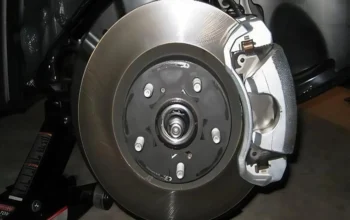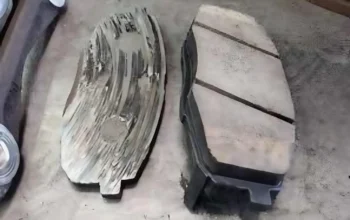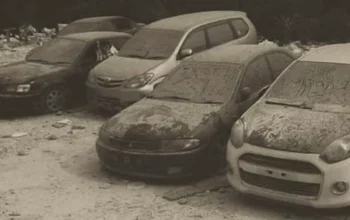Pena Global – Ever been confused about why your car’s engine keeps overheating? Or maybe you’ve noticed coolant leaking but can’t quite figure out where it’s coming from? Radiator damage can sneak up on even the most careful car owners. The thing is, when your radiator’s not working right, your engine’s health is on the line.
Radiator damage is one of the sneakiest culprits behind engine failure and overheating. If you don’t catch it early, it could lead to serious overheating damage, engine wear, and a big hit to your wallet. So let’s dig in and break down what causes radiator damage in cars—and more importantly, how to fix a radiator and stop the problem before it starts.
Table of Contents:
What Causes Radiator Damage in Cars?
Radiators are critical for keeping your engine cool, but several things can disrupt this flow and lead to serious issues. Here’s what you need to look out for:
1. Corrosion Buildup
Over time, poor coolant flow caused by neglect or using the wrong fluid leads to corrosion. This rust can eat away at the radiator’s metal, weakening it and eventually causing leaks. Mineral deposits from tap water or cheap coolants also clog up the internal passages, restricting circulation and adding heat stress to your engine.
Tip: Always use recommended radiator fluid and flush the system regularly to avoid rust and buildup.
2. Old Age and Wear
Like most car parts, radiators don’t last forever. After years of exposure to heat and pressure cycles, the material weakens. Rubber hoses may harden or crack, and solder joints could start to leak. A radiator that’s more than 8–10 years old is often due for inspection—or replacement.
3. Cracked Radiator Tanks
Cracks often happen due to extreme temperature changes, especially in plastic tanks. For example, going from a cold engine to sudden heat during driving can cause stress fractures. Once a crack forms, coolant leaks out and your engine runs hot in no time.
4. Pressure Problems
Overfilling the radiator can increase internal pressure. Too much pressure puts strain on the system and might cause damage to radiator seams or the cap. Similarly, a stuck thermostat or failed radiator cap can raise pressure beyond normal levels.
5. Wrong Coolant or Tap Water
Using the wrong type of coolant or just pouring in tap water is a big mistake. Tap water has minerals that lead to scaling, while incompatible coolants may not protect against corrosion. Both will hurt your radiator’s health.
Common Signs of Radiator Trouble
Not sure if your radiator’s in trouble? Look out for these warning signs:
- Engine overheating, especially in stop-and-go traffic
- Coolant puddles under the car
- Discolored coolant (brown, milky, or rusty)
- Low coolant level even after topping it off
- Steam from the hood
How to Prevent Radiator Damage
Preventing radiator issues is all about routine care and using the right products. Here’s a list of practical things you can do:
1. Clean Your Radiator Regularly
Radiator dirt buildup—like dust, mud, or debris—can clog the fins and block airflow. This reduces cooling efficiency. Wipe the radiator fins gently with a damp cloth every few weeks, and flush the cooling system every 6–12 months to keep coolant flowing smoothly.
2. Check the Coolant Level Often
Low coolant means trouble. Open the hood (only when cool!) and make sure the coolant level is between the “Min” and “Max” marks. Never overfill it, and never drive with it too low.
3. Use the Right Coolant
Only use coolant recommended by your car’s manufacturer or a trusted mechanic. Never mix coolants unless you know they’re compatible. And avoid using regular water—especially tap water.
4. Inspect the Radiator Cap and Reservoir
A faulty radiator cap can mess with pressure control, causing leaks or overheating. Make sure the cap seals properly and the reservoir (overflow tank) isn’t cracked or leaking.
5. Don’t Ignore Thermostat Problems
If your car takes forever to warm up or gets too hot too quickly, your thermostat could be stuck. A faulty thermostat can block coolant flow completely. Replace it before it causes overheating damage.
Detailed Causes and Fixes
Let’s go deeper into specific problems you might face and how to deal with them.
1. Dirty Radiator
A clogged radiator is a leading cause of radiator damage. When dirt or sludge builds up inside or outside the radiator, coolant can’t circulate properly, causing overheating.
Fix: Flush the radiator with a cleaner or take it to a shop for a deep flush. Clean the fins with a soft brush or damp cloth.
2. Water Pump Failure
If your water pump isn’t working, coolant won’t reach the engine efficiently. Corroded or cracked impellers often cause this issue.
Fix: Water pumps usually can’t be repaired, so replacing them is the only reliable option.
3. Faulty Thermostat
A stuck thermostat prevents coolant from circulating, leading to engine heat spikes.
Fix: Replacing the thermostat is relatively inexpensive and can save your engine from severe damage.
4. Blocked Radiator Passages
Using improper coolant or tap water can clog the radiator’s narrow tubes. Once blocked, the radiator can’t cool effectively.
Fix: Perform a coolant flush and switch to proper radiator fluid. Severe cases may need a radiator replacement.
5. Broken Fan Belt
Without the fan belt, your cooling fan won’t spin, and your radiator loses airflow. A worn or broken belt can also affect the water pump.
Fix: Replace the belt immediately. It’s a cheap part, but delaying the fix can cause costly damage.
Final Thoughts
Radiator damage doesn’t just appear overnight—it builds up from small issues like poor maintenance or using the wrong fluids. Luckily, a few simple habits like regular cleaning, using the right coolant, and watching for leaks can go a long way in keeping your radiator healthy.
So, next time your temperature gauge starts creeping up, don’t panic—now you know what to check first!
What do you think? Let’s get started today. Your radiator will thank you later.






